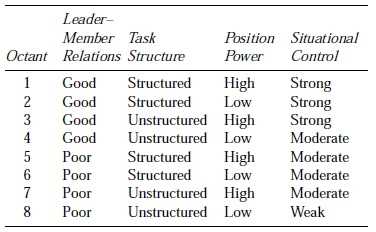What is the Least-Preferred Coworker Scale?

The Least-Preferred Coworker Scale is a psychological tool used to measure an individual’s leadership style and effectiveness. It was developed by Fred Fiedler, a psychologist, in the 1960s. The scale is based on the idea that a person’s leadership style can be determined by their least-preferred coworker (LPC).
The LPC is a coworker with whom the leader has had a difficult or challenging relationship. This person is someone the leader finds it hard to work with, and they may have conflicting values, personalities, or work styles. The LPC can be anyone, such as a colleague, subordinate, or supervisor.
The scale consists of a series of bipolar adjectives, such as “friendly-unfriendly,” “pleasant-unpleasant,” and “supportive-hostile.” The leader rates their LPC on each adjective, indicating whether they perceive the coworker more positively or negatively. The scores are then used to determine the leader’s leadership style.
According to the Least-Preferred Coworker Scale, there are two main leadership styles: task-oriented and relationship-oriented. A leader with a low LPC score is considered task-oriented, meaning they focus more on achieving goals and completing tasks. On the other hand, a leader with a high LPC score is considered relationship-oriented, meaning they prioritize building relationships and maintaining harmony within the team.
How Does the Least-Preferred Coworker Scale Work?
The Least-Preferred Coworker Scale (LPC) is a psychological tool used to measure a person’s leadership style and their ability to work with others. Developed by Fred Fiedler in the 1960s, the LPC scale is based on the premise that a person’s leadership style is determined by their perception of their least-preferred coworker.
The LPC scale consists of a series of bipolar adjectives, such as “friendly-unfriendly” and “efficient-inefficient,” which are used to describe the least-preferred coworker. The person being assessed is asked to rate their least-preferred coworker on a scale of 1 to 8 for each adjective, with 1 being the most unfavorable rating and 8 being the most favorable rating.
Once the ratings are obtained, the LPC score is calculated by summing the ratings for the favorable adjectives and subtracting the sum of the ratings for the unfavorable adjectives. A high LPC score indicates a person who has a more positive perception of their least-preferred coworker and tends to have a more relationship-oriented leadership style. On the other hand, a low LPC score indicates a person who has a more negative perception of their least-preferred coworker and tends to have a more task-oriented leadership style.
The LPC scale is based on the idea that a person’s leadership style is contingent upon the situation they are in. Fiedler’s contingency theory suggests that a person’s effectiveness as a leader depends on the degree of situational favorableness. Situational favorableness is determined by three factors: leader-member relations, task structure, and position power. The LPC score is used to assess a person’s leadership style in relation to these situational factors.
The Importance of the Least-Preferred Coworker Scale for Business Leaders
The Least-Preferred Coworker (LPC) scale is a valuable tool for business leaders to assess and understand the dynamics of their teams. It provides insights into the relationships between team members and helps identify potential issues that may hinder productivity and collaboration.
1. Assessing Team Dynamics
2. Identifying Potential Challenges
3. Enhancing Team Collaboration

4. Improving Employee Satisfaction
Addressing the issues highlighted by the LPC scale can lead to improved employee satisfaction. When conflicts and challenges are resolved, employees feel more valued and supported in their work environment. This, in turn, can boost morale, increase productivity, and reduce turnover rates.
5. Promoting Effective Leadership
Implementing the Least-Preferred Coworker Scale in Your Organization
To implement the Least-Preferred Coworker Scale, follow these steps:
Step 1: Familiarize Yourself with the Scale
Before implementing the scale, it is important to understand how it works and what it measures. The Least-Preferred Coworker Scale is a tool used to assess individuals’ leadership styles and their preferences for working with different types of coworkers. It measures the extent to which an individual views their least-preferred coworker as friendly or unfriendly, competent or incompetent, and how willing they are to work with them.
Step 2: Administer the Scale
Administer the Least-Preferred Coworker Scale to your employees or team members. This can be done through surveys or interviews. The scale consists of a series of questions that ask individuals to rate their least-preferred coworker on various dimensions, such as friendliness and competence. The responses are then used to calculate a score that reflects the individual’s leadership style.
Step 3: Analyze the Results
Once you have collected the data, analyze the results to gain insights into the preferences and perceptions of your employees. Look for patterns and trends that can help you understand the dynamics within your team. For example, if a majority of employees view their least-preferred coworker as unfriendly or incompetent, it may indicate a need for team-building activities or leadership development.
Step 4: Use the Insights to Inform Decision-Making
Use the insights gained from the Least-Preferred Coworker Scale to inform your decision-making processes. For example, if you notice that certain individuals consistently rate their least-preferred coworker as unfriendly, you may want to consider reassigning team members or providing additional training to improve interpersonal relationships.
Step 5: Foster a Positive Work Environment
Based on the insights gained from the scale, take steps to foster a positive work environment. This can include implementing team-building activities, providing leadership development opportunities, or addressing any issues that may be negatively impacting the team dynamics. By creating a supportive and inclusive work environment, you can improve employee satisfaction and productivity.

Emily Bibb simplifies finance through bestselling books and articles, bridging complex concepts for everyday understanding. Engaging audiences via social media, she shares insights for financial success. Active in seminars and philanthropy, Bibb aims to create a more financially informed society, driven by her passion for empowering others.
